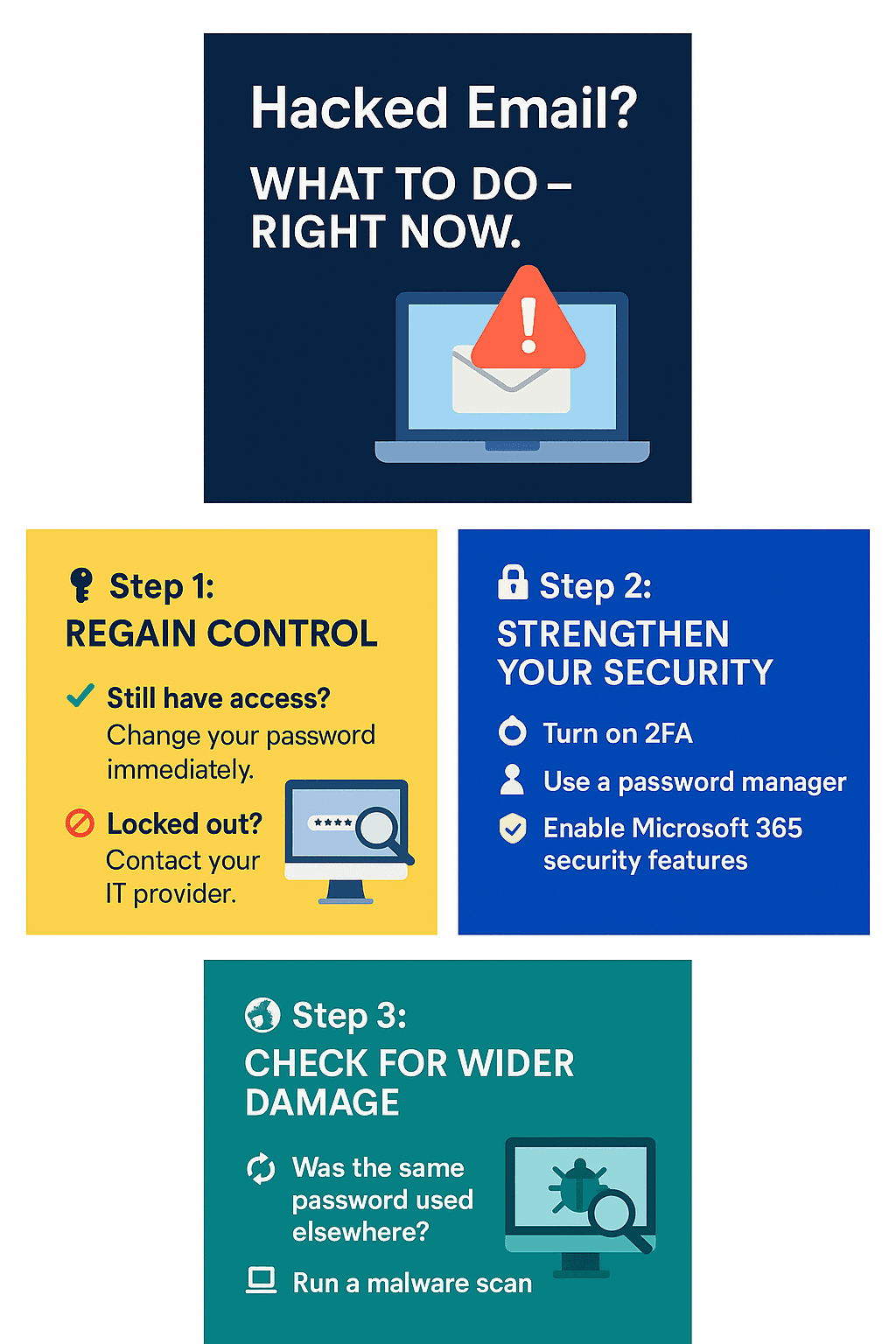Email is the digital front door to your business – and if it gets compromised, the consequences can ripple far beyond your inbox. Whether you use a Microsoft 365 account we manage for you, or an external email provider, this post explains the practical steps you need to take immediately, and how to prevent future attacks.

Step 1: Regain Control – Immediately
Change Your Password
If you still have access to your email, change your password immediately. Choose a strong, unique password that you haven’t used elsewhere. Don’t just add a “1” to the end – go for a passphrase or use a password manager to generate something truly secure.
If we manage your email, contact us straight away – we can force a reset and help you regain access securely.
Locked Out? Take Action
If you’ve been locked out of your account or notice suspicious logins (e.g. sign-ins from unusual locations), act fast:
- Contact your IT provider or email administrator.
- Request an account reset and block further access if possible.
If we are managing it, we can review Microsoft sign-in activity, force sign-outs, and apply conditional access to block further intrusion.
Step 2: Improve Your Security
Turn on Two-Factor Authentication (2FA)
This is the single biggest improvement you can make. 2FA means even if someone steals your password, they can’t log in without access to your phone or authentication app. If you’re using Microsoft 365, this should be turned on as standard — if it’s not, we strongly recommend enabling it.
Use a Unique, Strong Password
One of the most common mistakes is reusing the same password across multiple accounts. If hackers get access to one, they often try it elsewhere — a method known as “credential stuffing.”
Use a password manager (like Keeper) to generate and store unique, strong passwords for each service.
Consider Additional Security Features
If you use Microsoft 365, ask about advanced features such as:
Login alerts for suspicious activity
Conditional Access Policies to restrict logins by geography or device
If we provide it, we can help you review and configure these.
Advanced Email Threat Protection can block phishing and malware at source.
Step 3: Consider the Wider Impact
Was This Password Used Elsewhere?
If the same password was used on other services (e.g. LinkedIn, Dropbox, even Netflix), change those passwords too. Email accounts are often the gateway to resetting other logins – so this matters.
Check for Malware or Keyloggers
If a hacker gained access using a password that you’re certain was private, it’s possible your device is compromised. Run a full malware and antivirus scan, and consider:
Reinstalling a clean version of your operating system (if the compromise is severe)
Getting IT support to check for persistent threats like keyloggers or remote access tools
Conclusion
Getting hacked can be stressful, but how you respond matters more. Taking swift action and improving your security setup can prevent far worse consequences — including data theft, reputational damage, or unauthorised financial access.
If you need help, feel free to get in touch. We may be able to help you secure your account, your devices, and your digital identity.






